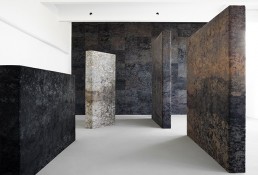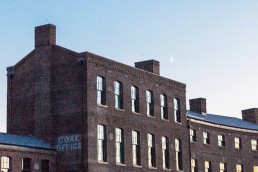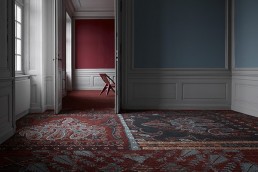Ege Carpets updates Tom Dixon collection
Ege Carpets has updated to its Industrial Landscape collection by British designer Tom Dixon, unveiling a series of new designs inspired by London structures and materials. Mirroring the raw, sometimes even rough, elements making up the city, the designs are aged and patinated to reflect the marks that the weather, people and industry have left on materials over time.
Two of the new designs, Coal and Iron, interpret key industrial pillars of the range. While Coal reflects the dark and mysterious substance that powered the Industrial Revolution, Iron imitates the gradual disintegration of oxidised metal surfaces that generate a hued patination.
Besides that, the collection consists of five other patterns: Smoke visualises the fumes from factories and workshops, while Wash is inspired by the white paste that temporarily covers shop windows during renovation. With Blur, the distorted city reflects in transient bits of water, while Tide shows the ever-changing sediments of the tidal River Thames. As the seventh and final design, Brick symbolises the London bricks visible all over the townscape.
Each of the seven designs is available as tiles or broadloom, and comes in Ege Carpets’ Highline 1100, Loop and Carré qualities that are made from regenerated and regenerable Econyl yarns. Produced from abandoned fishing nets and other industrial nylon waste, these yarns can be reborn over and over again in a closed cycle. The tiles are fitted with Ege Carpets’ patented Ecotrust backing based on used water bottles that are turned into a durable and sound reducing felt material. Cradle to Cradle Certified, the products are an entirely green carpet choice.
Technology revives old materials in the Industrial Landscape collection, facilitating a visual re-emergence of scarce resources and non-sustainable materials such as coal while introducing completely new and environmentally friendly solutions.
“As the raw materials become scarce or morally unjustifiable to use, we can replace them with man-made imitations,” Dixon explains. “Digital technologies push the limits for what is real and what is not, while making it possible to use materials or elements from the past in a sustainable and responsible manner.”
Related Posts
18 September 2017
Tom Dixon HQ moves to Kings Cross
27 July 2017
Tom Dixon expands wingback family
19 April 2017




